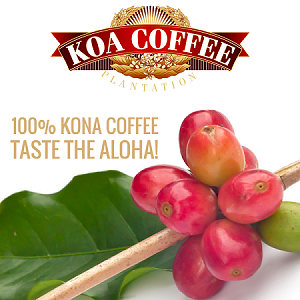In the intricate ballet of factors that converge to shape our daily brew, one word stands out, resonating with the tales of sun-kissed slopes, rain-fed soils, and the caress of nature: terroir. At its core, terroir is the symbiotic relationship between the land and the crops it nurtures. Yet, in the realm of coffee, it evolves into a narrative—of places, processes, and people. “What is Terroir?” is not merely a question seeking a definition but an invitation to journey through diverse landscapes, from the bustling coffee shops in urban jungles to the silent symphony of coffee farms echoing with stories of legacy and passion. This exploration, specifically within the context of terroir coffee, promises a deeper understanding of why each sip of your morning ritual holds a universe of flavors, stories, and memories.
Join us as we traverse this rich tapestry, weaving the global expanse of coffee-producing regions with the intimate tales of farmers, consumers, and the coffee shops that act as bridges between the two.
Give your eyes a break – click below to listen to the article.
- Introduction & Key Takeaway
- https://app.mysoundwise.com/tracks/16989573766109509e.mp3
- The Basics of Terroir
- https://app.mysoundwise.com/tracks/16989574171115935e.mp3
- Terroir and Coffee Flavor Profiles
- https://app.mysoundwise.com/tracks/16989574910790488e.mp3
- Mapping Coffee Terroirs Worldwide
- https://app.mysoundwise.com/tracks/16989575433009065e.mp3
- The Farmer’s Role in Terroir
- https://app.mysoundwise.com/tracks/16989575893976628e.mp3
- Consumers, Coffee Shops, and Terroir
- https://app.mysoundwise.com/tracks/16989576210875784e.mp3
- Conclusion & FAQs
- https://app.mysoundwise.com/tracks/16989577151538132e.mp3
Terroir and Coffee: Key Takeaway
- Terroir’s Complexity: Terroir encapsulates the unique environmental elements shaping a coffee’s flavor, distinct to each region.
- Farmers’ Role: Beyond nature, farmers enhance terroir with cultivation practices, conservation, and their personal narratives.
- Consumer Awareness: Growing consumer discernment has elevated the value of terroir-driven coffee, reflected in coffee shops and product labels.
- More Than Flavor: Terroir, while central to coffee, is influenced by processing, roasting, brewing, and human touch, shaping the final taste.
- Looking Ahead: As palates evolve and farming innovates, terroir’s importance promises a future where coffee is deeply appreciated and celebrated.
The Basics of Terroir
Terroir is a French term often used in discussions around wine, coffee, and other agricultural products to describe the unique environmental conditions and factors that influence the flavor and aroma of what we consume. Grasping the essence of terroir is fundamental to understanding the nuances of different coffee regions, and it sheds light on the intricate relationship between nature and the eventual taste of your brew.
Defining Terroir: A Historical Context

The word ‘terroir’ harks back to the rich agricultural history of France, emphasizing the importance of land and environment in crop cultivation.
- The Evolution of Terroir: French winemakers, over centuries, have honed the concept of terroir by scrutinizing wine differences in various regions, vineyards, and even within the same vineyard. (1)
- Capturing the Essence of Place in Wine: This concept, crystallized by the French, describes the unique characteristics of a place that shape the wine produced.
- Monastic Wisdom: Even in antiquity, wine-producing regions recognized that different areas could yield distinct wines, with the Ancient Greeks stamping amphorae with regional seals and monks in Burgundy meticulously studying land influences on wine, leading to the establishment of today’s Grand Cru vineyards.
The concept of terroir serves as a historical testimony to nature’s vital role in shaping the flavors and scents we relish in various crops, including coffee.
Why Terroir Matters: Beyond Wine and Into Coffee
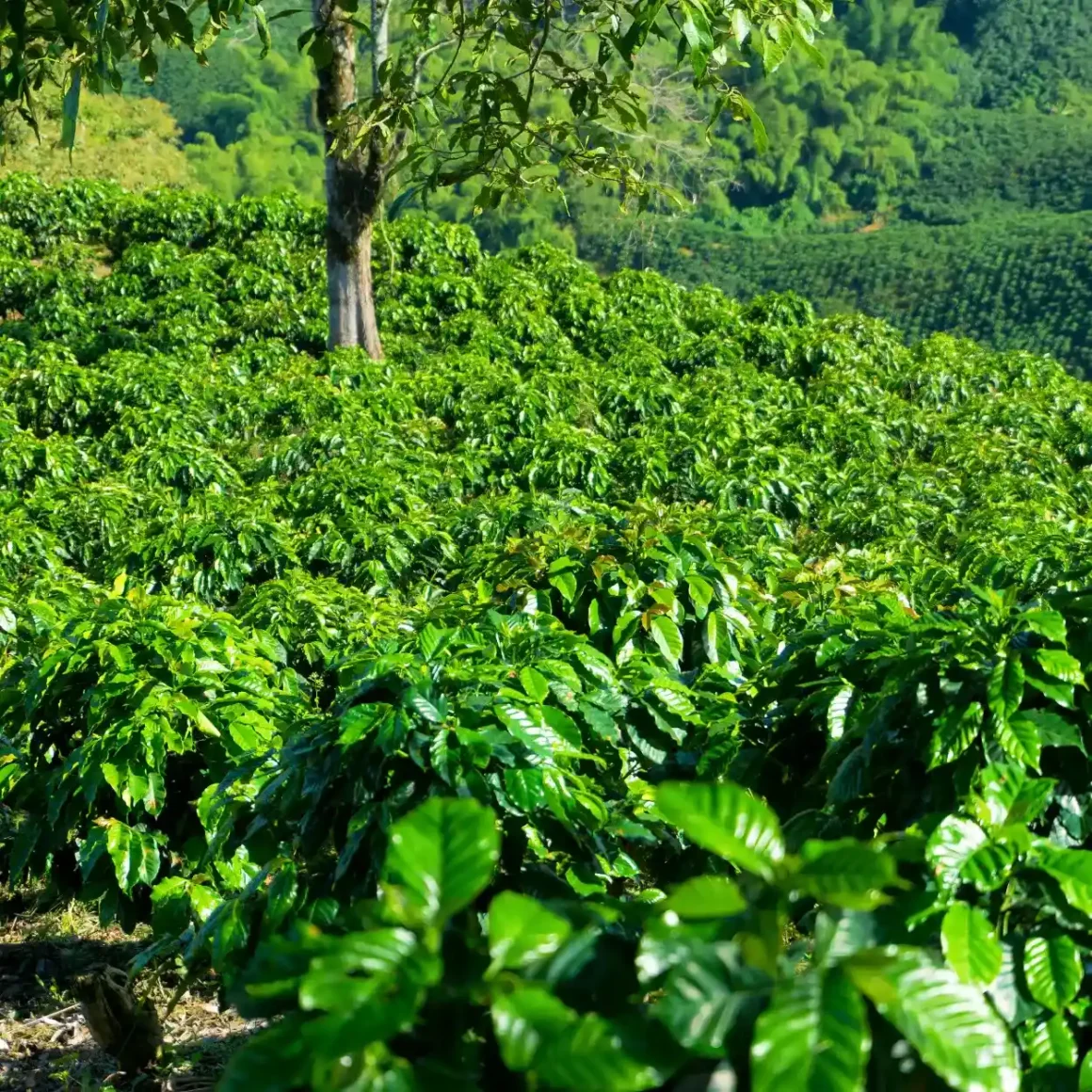
While wine enthusiasts have long recognized the significance of terroir, the coffee world has increasingly embraced its importance, recognizing how this concept deeply influences the beans’ molecular essence and the subsequent taste of the brew.
- Distinctive Coffee Profiles: Due to varied terroirs, Ethiopian coffee is discernibly different from those in Colombia, Indonesia, or Brazil. This explains the diversified flavor profiles across coffee regions.
- Non-replicability: A coffee bean’s taste and aroma, sculpted by its terroir, are unparalleled. This singularity accentuates the intrinsic characteristics of its variety.
- Importance in Coffee Cultivation: While terroir’s role in wine is undisputed, its significance in coffee is profound, albeit different. Processing methods, like fermenting or drying, can amplify or diminish the terroir’s impact. Nevertheless, understanding what is terroir and its influence remains central to cultivating beans that carry the essence of their origin.
Terroir’s role in coffee cultivation is indispensable. It’s the silent artist, painting each bean with a unique flavor palette, narrating the tale of its origin.
Factors Influencing Terroir
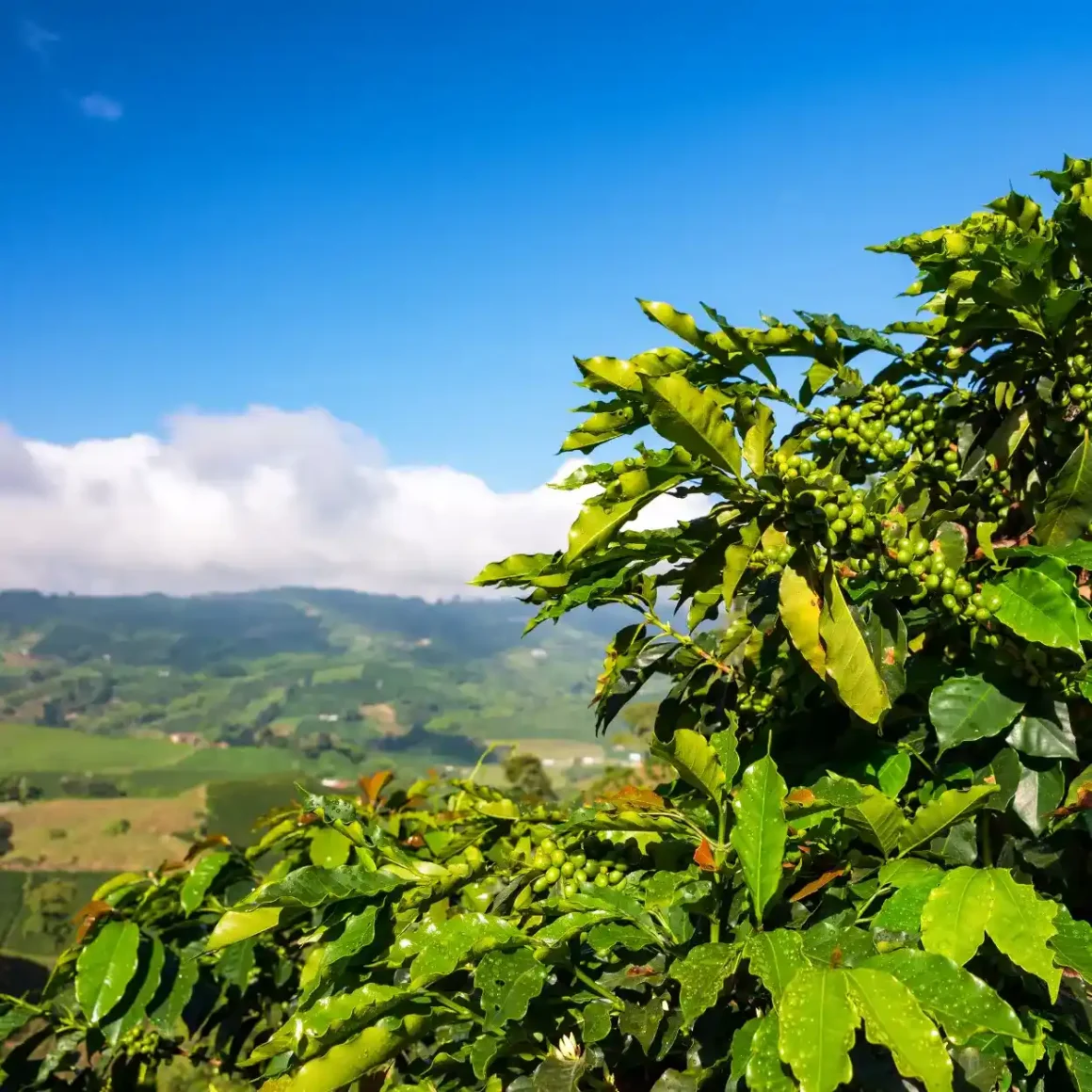
Terroir isn’t dictated by a single element; it’s a symphony of various environmental and agricultural factors harmonizing to influence a coffee bean’s flavor profile.
- Soil: The nutrients and drainage capacities of the soil play a pivotal role. For instance, the volcanic soil of Hawaii imparts a different terroir to coffee than the highlands of Kenya.
- Climate: Elements like sunlight duration and rainfall patterns are direct agents modifying the flavor notes of coffee beans.
- Topography: Altitude is particularly influential. Higher elevations tend to produce coffee cherries with more depth and complexity, akin to grape cultivation.
- External Factors: Changes in weather patterns, such as varying amounts of rainfall or sunlight, can momentarily alter the traditional terroir of a region, impacting the development of coffee cherries.
In the journey from cultivation to consumption, multiple factors coalesce to dictate the narrative of each coffee bean. Terroir, with its myriad influencers, is the heart of this journey, celebrating the diversity of coffee regions globally.
Terroir and Coffee Flavor Profiles
The mystique behind the varying flavor profiles of coffee can be traced back to the influence of terroir. Just as wine connoisseurs discern regions and vintages, coffee aficionados discern beans by their unique environmental imprints. The terroir, comprising elements like soil, climate, and altitude, orchestrates a symphony of factors that shape the individual character of coffee cultivated in different coffee regions.
How Soil Composition Affects Taste

Soil, intrinsically tied to the term ‘terroir’ which translates to ‘earth’, naturally plays a pivotal role in the saga of coffee cultivation.
- Mineral Richness: The mineral composition of the soil, especially volcanic variants, bestows coffee with distinct richness and sharpness. Notably, volcanic soils, abundant in nutrients like potassium, phosphorus, and magnesium, are revered for fostering superior coffee growth.
- Variation Across Regions: Though volcanic soils are consistent in nutrient content, coffee grown in Hawaii’s volcanic terrains can taste different from that of Kenya, accentuating the interplay between soil and climate in determining flavor.
- Companion Crops’ Influence: The neighbors of coffee trees, like fruits or vegetables, can leave their mark on the coffee’s flavor. Studies have unveiled intriguing insights, such as avocados cultivated alongside coffee trees, subtly influencing the final taste. This phenomenon opens new horizons for producers to experiment with co-cultivation techniques for unique flavor craftsmanship.
The soil, with its multifaceted components, weaves the foundational narrative of coffee’s flavor, underscoring the importance of understanding its dynamics in coffee cultivation.
Climate’s Role in Shaping Coffee Character
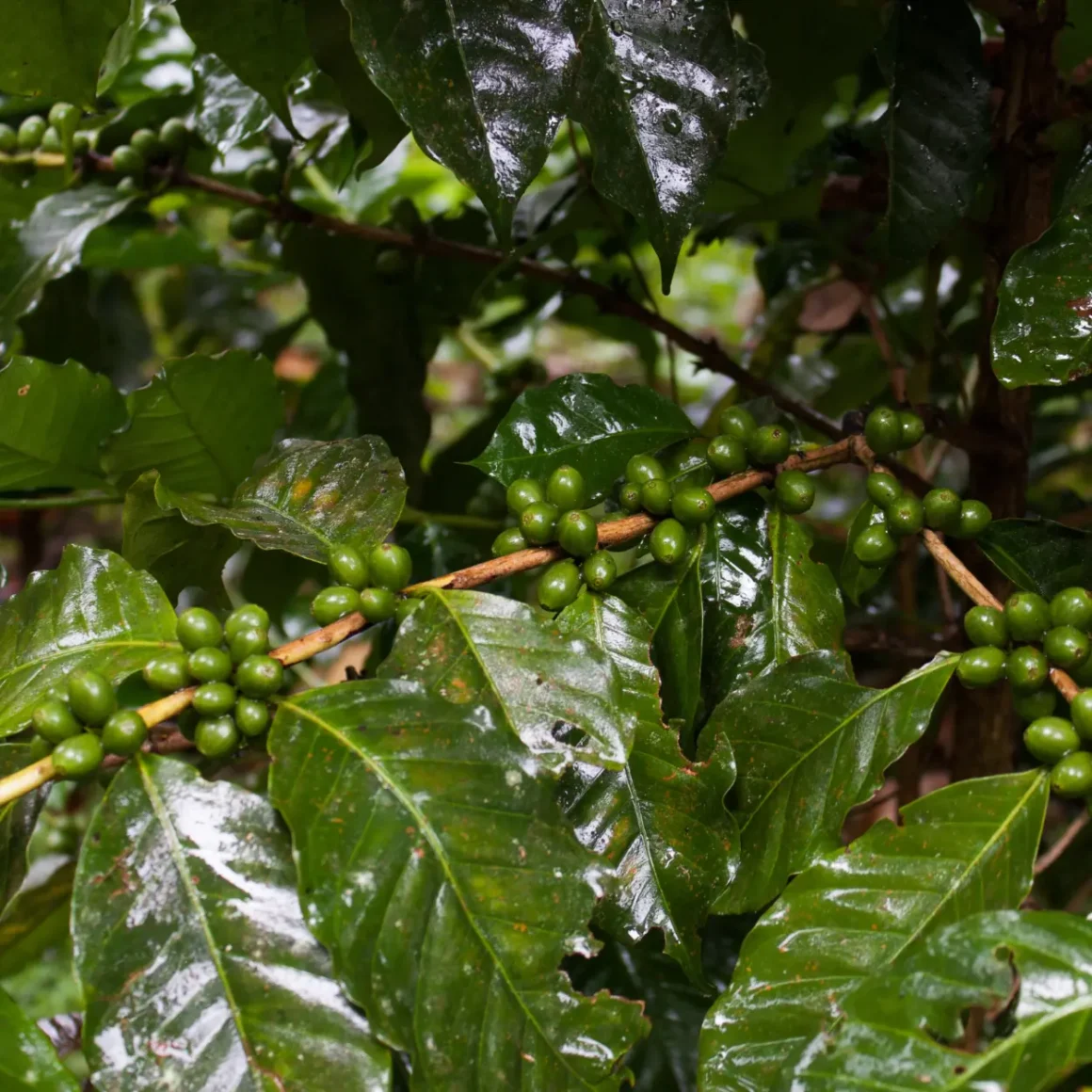
Climate, especially in the coveted “coffee bean belt” near the equator, plays a cardinal role in molding the flavor profiles of coffee beans.
- The Coffee Bean Belt: This belt encapsulates regions optimal for coffee cultivation, stretching from the southern hemispheres with nations like Brazil and Tanzania to the northern reaches including Mexico and California. Though within the belt, the specific climates of these coffee regions differ profoundly. (2)
- Macro vs. Micro Climates: While “macro” pertains to the overarching regional climate, “micro” zeroes in on specific locales within that region, sculpted by unique topographical features and surrounding elements.
- Seasonal Dynamics: Coffee trees flourish under a rhythm of wet and dry seasons. The wet phase facilitates growth and nutrient assimilation, while the dry period primes the stage for harvesting and processing.
Climate, in its nuanced layers, is the unseen artist, coloring the beans with distinct traits, adding depth and diversity to the world of coffee cultivation.
The Elevation Factor: Why Altitude Matters

Altitude, while integral to crops like grapes for wines, takes on a unique significance in the realm of coffee cultivation.
- Temperature and Altitude: For coffee, it’s not just about higher altitudes equating to better quality. It’s about the ambient temperature. Cooler terrains accentuate coffee’s acidity and play a pivotal role in determining fruit maturation rates.
- Maturation and Flavor: In higher elevations, coffee cherries mature at a more leisurely pace, imbibing more sugars. This results in denser beans with intricate flavors, distinguishing them from their low-altitude peers.
- Elevation on Labels: Packaging occasionally cites elevation to discern differences even within the same country. While useful when comparing beans from similar regions, it becomes less definitive when contrasting vastly different terrains like Ecuador and Yemen. However, higher-altitude coffees, often demanding more precision in cultivation, tend to offer richer flavor nuances.
Altitude, as an influential component of terroir, silently architects the taste journey of each coffee bean, emphasizing its role in crafting superior coffee experiences.
Mapping Coffee Terroirs Worldwide
Journeying through the vast expanse of the global coffee belt, one is introduced to the distinctive terroirs that set the stage for the world’s favorite brew. The term ‘terroir’ captures the essence of a region’s unique environmental variables, painting a vibrant picture of why a cup of coffee tastes the way it does. Each of the prominent coffee-producing countries contributes a distinct chapter to this global story.
Notable Coffee-Growing Regions and Their Unique Terroirs
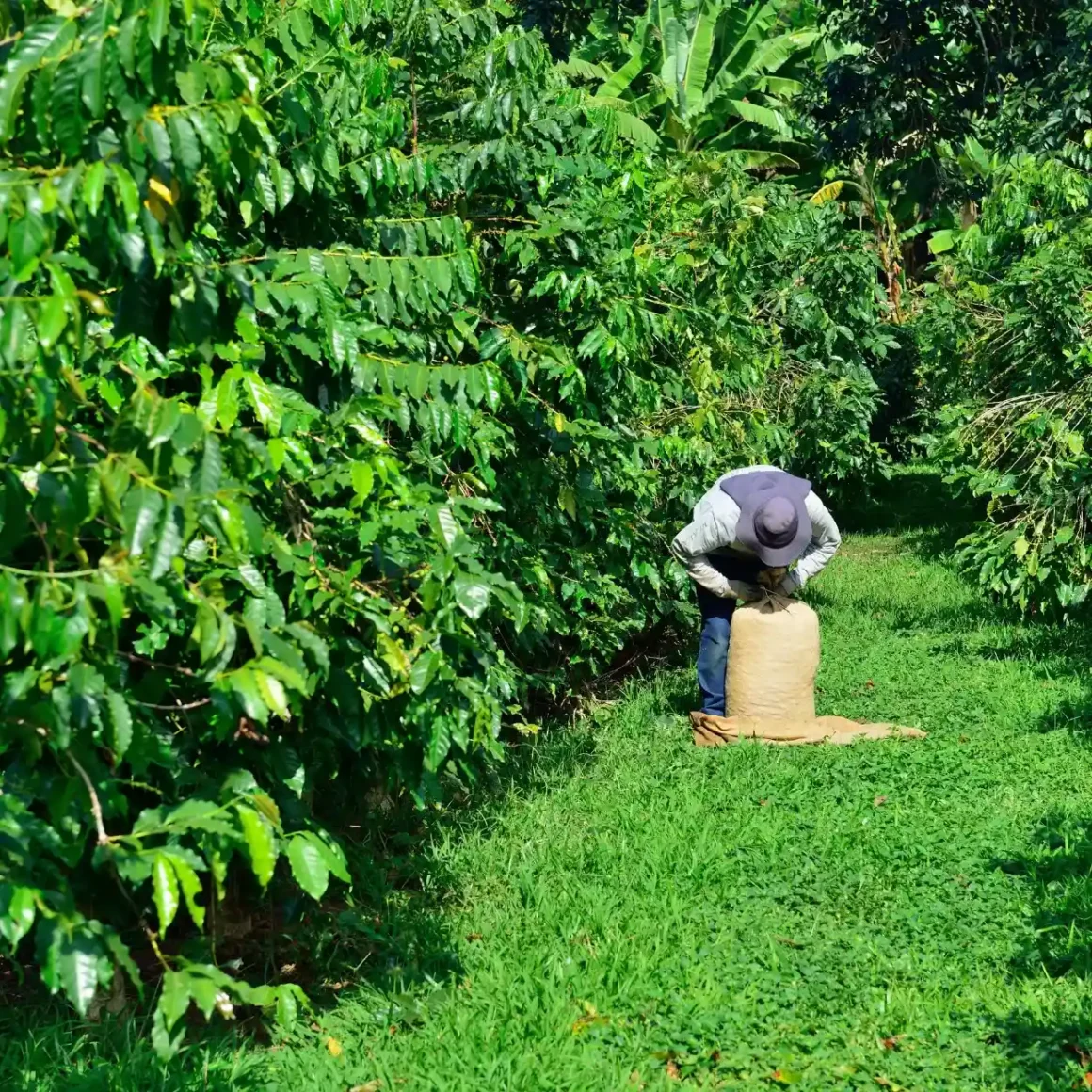
Delving into the heart of coffee’s essence requires an exploration of its birthplaces. The coffee-growing regions, each with its characteristic environment and culture, gift the world an array of flavors and aromas.
- Colombia: Nestled within the embrace of the Andes, Colombian beans bask in the richness of volcanic soil, abundant sunlight, and high altitudes. The result is a brew radiant with floral undertones and wine-inspired notes.
- Guatemala: A mosaic of over 300 microclimates, Guatemala is famed for its beans that boast of pronounced acidity, a dash of chocolate, and a robust aroma reminiscent of nuts.
- Costa Rica: This mist-covered land offers a consistent multifaceted taste profile. With coffee deeply entrenched in its economy, Costa Rican brews are a mélange of floral scents and deep chocolate overtones.
- Sumatra: Marked by its unique wet-hulling method, Sumatran coffee exudes earthy, spicy flavors, setting it apart from its global counterparts.
- Hawaii – Kona: Kona coffee symbolizes the essence of Hawaii, thriving in cooler terrains, and celebrated for its nuanced taste replete with floral and fruity hints.
- Ethiopia: As the cradle of coffee, Ethiopia’s sun-dried beans, nurtured in a dry, elevated climate, offer a sensory delight rich in fruity aromas and floral sharpness.
- Brazil: Dominating the global coffee landscape, Brazil’s diverse terrains yield beans with earthy, spicy, and sweet undertones, beautifully harmonized through their innovative “pulp natural” processing method.
These regions, each narrating its unique coffee tale, enrich our palate, reinforcing the importance of understanding and appreciating the varied terroirs across the globe.
Taste Journey: How Brew Methods Shape Coffee Terroir
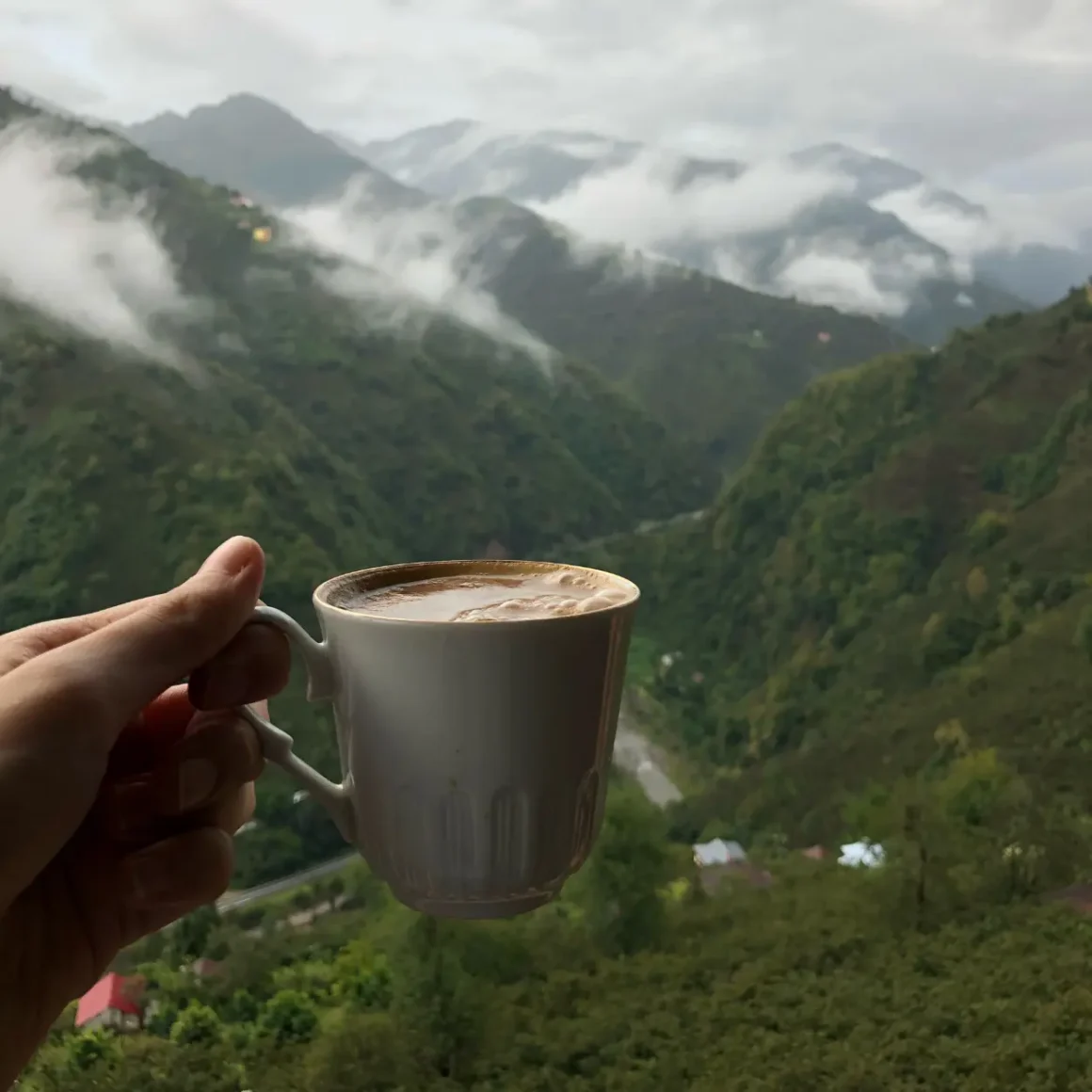
The exploration examines how diverse coffee brewing methods shape the sensory experience of coffee, especially when assessing its terroir, adding intrigue to the captivating journey of coffee tasting.
- Coffee Brewing’s Influence on Terroir Evaluation: The choice of coffee brewing method has a profound impact on the sensory experience for the drinker and plays a crucial role in assessing the terroir of coffee, assuming a consistent roast.
- Global Variety in Coffee Brewing Techniques: There is a growing diversity of Coffee brewing techniques employed globally, each with its own influence on the coffee’s sensory characteristics.
- Espresso Brewing: Intensity and Bitterness: Espresso brewing intensifies coffee concentration and bitterness, accentuating toasted and nut-like flavors.
- Balanced Terroir Sensory Attributes in Filter and Cupping Techniques: Filter brewing, often employing a paper-filter, results in a coffee with reduced bitterness. with a preference for fruity notes. The cupping technique strikes a balance between the intensity of espresso and the retention of coffee oils, offering a well-rounded terroir experience. (3)
In summary, the global array of coffee brewing techniques contributes to a tapestry of diverse flavors and aromas, enriching the complex realm of coffee-terroir. Whether one prefers the robustness of espresso or the well-rounded qualities of filter and cupping techniques, each brewing method uniquely reveals the secrets of terroir, creating an exceptionally rewarding coffee experience.
Challenges & Opportunities in Protecting Terroirs
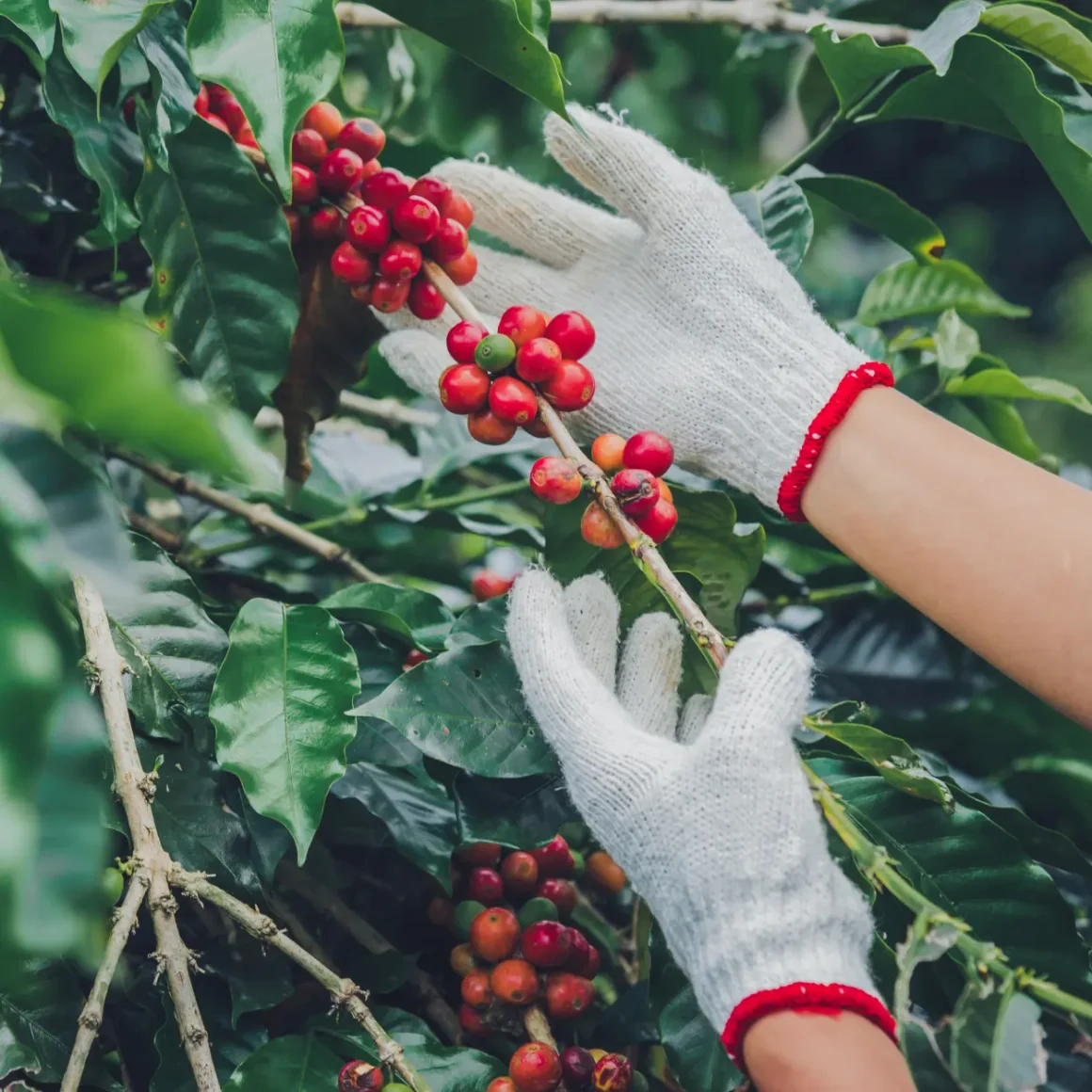
As we revel in the diverse flavors of coffee, it’s imperative to acknowledge the challenges and opportunities associated with preserving these unique terroirs.
- Environmental Fluctuations: A single shift in weather patterns, like unusual droughts or excessive rainfall, can profoundly alter a region’s terroir, affecting the coffee’s maturation and eventual flavor.
- Preservation of Unique Traits: Efforts must be concentrated on safeguarding the distinct terroir of each region, ensuring that beans like the 100% single-origin Colombian or Ethiopian remain true to their roots.
- Replication Limitations: Despite technological advancements, replicating a region’s terroir in controlled environments remains elusive. The multifaceted nature of terroir makes it a challenge, reinforcing the need to protect natural habitats.
- Awareness and Appreciation: Educating consumers about the journey from bean to cup, emphasizing the role of terroir, can foster deeper appreciation and conscious choices, aiding in terroir conservation.
Terroir, while offering a rich tapestry of flavors, brings forth the responsibility to protect and cherish these unique environmental imprints, ensuring that the diverse symphony of coffee continues to enthrall generations.
The Farmer’s Role in Terroir
Behind every cup of terroir coffee lies the meticulous labor and expertise of a farmer. These guardians of the earth harness the environment’s unique characteristics, blending them seamlessly with their time-tested techniques. Coffee farms, as the backdrop for this enchanting alchemy, are where nature’s serendipity meets the farmer’s devotion, crafting the inimitable essence we savor in each sip.
Terroir Conservation: Farming Techniques and Sustainability

The heart of coffee cultivation lies not just in the act of planting but in the harmonious balance between nature and nurture. Sustainable farming techniques are the bridge connecting the distinctive terroir with the global coffee connoisseur.
- Shade-Grown Coffee: By cultivating coffee under the canopy of native trees, farmers not only mimic natural ecosystems but also enrich soil quality and reduce the need for chemical fertilizers.
- Crop Rotation: This age-old technique rejuvenates the soil, ensuring it remains rich in nutrients and fosters the growth of beans true to their terroir.
- Water Conservation: Many coffee farms are innovating with techniques like rainwater harvesting and drip irrigation, ensuring that precious water resources are judiciously used.
- Natural Pest Control: By introducing beneficial insects or practicing intercropping, farmers can naturally keep pests at bay without resorting to harmful chemicals.
Sustainable farming, by intertwining with terroir conservation, not only accentuates the flavor profiles of the beans but also promises a greener, more vibrant future for coffee cultivation.
The Future of Farming and Terroir: Innovations on the Horizon

As we gaze into the future of coffee cultivation, it’s evident that innovation will walk hand in hand with tradition, ensuring the preservation of terroir while meeting the demands of a changing world.
- Precision Agriculture: Leveraging technology, farmers can now monitor soil health, moisture levels, and even predict pest infestations, allowing them to make informed decisions.
- Genetic Research: Scientists are delving into coffee genomes, aiming to develop strains that are not only true to their terroir but are also more resilient to climatic changes.
- Eco-friendly Processing: From using less water in the washing process to harnessing solar energy for drying, the next wave of coffee processing promises to be greener and more sustainable.
- Direct-Trade Platforms: Embracing technology, farmers are looking to connect directly with consumers, narrating the story of their terroir and ensuring they get a fair price for their labor.
The horizon of coffee farming gleams with promise. As innovations pave the way, they fortify the bond between the farmer and their terroir, ensuring that the world continues to be enchanted by the magic in their cup.
Consumers, Coffee Shops, and Terroir
As the aroma of freshly brewed coffee wafts through the air, there’s an intricate dance of factors influencing that scent. From the sun-drenched slopes where the best coffee beans in the world are cultivated to the skilled hands that roast them, terroir plays a pivotal role. Today, consumers and coffee shops alike are embarking on journeys to understand, appreciate, and celebrate this nuanced relationship between coffee and its place of origin.
Terroir in Coffee Labeling: What Should You Look For?

Choosing a coffee goes beyond merely selecting a brand or roast; it’s about connecting with the bean’s story. Terroir-driven labeling offers consumers a pathway into the world’s best coffee regions, helping them understand the bean’s journey.
- Origin: An explicit mention of the coffee’s geographical origin, like “Kenyan” or “Colombian,” indicates the primary terroir influence on the bean.
- Altitude: Higher elevations often produce beans with more acidity and complex flavor profiles. Labels specifying altitude give insights into the bean’s growing environment.
- Processing Method: Whether it’s sun-dried, wet-processed, or honey-processed, the method can greatly influence the flavor profile.
- Varietal: The specific subspecies or cultivar of the coffee plant, like Geisha or Bourbon, can hint at distinctive taste characteristics.
- Harvest Date: Freshness matters. A recent harvest date ensures you’re getting beans at their peak flavor.
By understanding and seeking out these details on coffee labels, consumers can elevate their coffee experience, savoring not just a beverage but a rich tapestry of stories and flavors.
Coffee Shop Experiences: Bringing Terroir to the Cup

Modern coffee shops have transformed into sanctuaries of flavor exploration. These establishments are now gateways that transport consumers to distant lands with each sip.
- Single-Origin Brews: More cafes are spotlighting single-origin coffees, allowing patrons to taste the distinct terroirs of specific regions.
- Tasting Flights: Similar to wine tastings, some shops offer flights of coffee, guiding consumers through a sensory exploration of different terroirs.
- Educational Sessions: Barista-led sessions delve into the intricacies of terroir, processing, and brewing, enriching the consumer’s knowledge.
- Pairing Menus: Some cafes curate food pairings that complement the coffee’s terroir-driven flavors, creating a holistic tasting experience.
Coffee shops, in their pursuit of excellence, are evolving into epicenters of flavor discovery, kindling a deeper appreciation for the terroir’s influence on coffee.
The Evolution of Consumer Palates and Demand for Terroir-driven Coffee

The global coffee landscape is witnessing a seismic shift. As consumers become more discerning and informed, there’s a burgeoning demand for terroir-driven coffees.
- Flavor Sophistication: Many consumers are moving beyond generic taste descriptors, seeking out nuanced flavors like “berry undertones” or “chocolatey finish.”
- Ethical Consumption: An awareness of terroir also brings into focus the farmers, their practices, and the sustainability of coffee cultivation. This results in a preference for ethically sourced beans.
- Home Brewing: The rise in home brewing techniques has consumers experimenting with beans from various terroirs, refining their palates.
- Global Exploration: A heightened interest in world cultures and cuisines has translated into a curiosity for coffee from diverse regions.
The global palate is on a relentless quest for authenticity and depth. As it evolves, the demand for terroir-driven coffee not only amplifies but also reshapes the very fabric of the coffee industry.
Conclusion
In the vast panorama of the coffee world, the concept of terroir emerges not merely as an explanation for taste but as an emblem of identity, legacy, and craft. As we’ve journeyed through the multifaceted layers of terroir coffee, we’ve discovered that behind each cup lies a tapestry of elements—nature’s whims, a farmer’s dedication, the discerning palates of consumers, and the evolving narratives of coffee shops. Terroir, thus, is more than a geographical imprint on coffee beans; it’s a testament to the intricate dance of nature, nurture, and human touch. As consumers, understanding and appreciating this dance enriches every sip, reminding us that each brew is not just a caffeine fix but a story, a memory, and a connection to far-flung corners of the world. So, the next time you cradle a cup of terroir coffee, remember you’re not just tasting a beverage—you’re savoring a legacy.
FAQ
Are certain coffee flavors exclusive to specific terroirs?
Yes, specific flavors and aromas in coffee can be exclusive to certain terroirs due to the unique environmental factors of each region.
How can farmers alter or improve their land's terroir?
Farmers can implement sustainable farming practices, soil enrichment, and crop rotation to influence and potentially improve their land's terroir.
Why are high-altitude coffees often more sought after?
High-altitude coffees are prized for their complex flavors and increased acidity, often resulting from slower cherry maturation in cooler conditions.
Can the concept of terroir apply to other beverages or foods besides wine and coffee?
Yes, terroir can apply to various foods and beverages, including tea, cheese, and certain produce, as it refers to the unique taste and flavor imparted by the environment in which they're produced.

